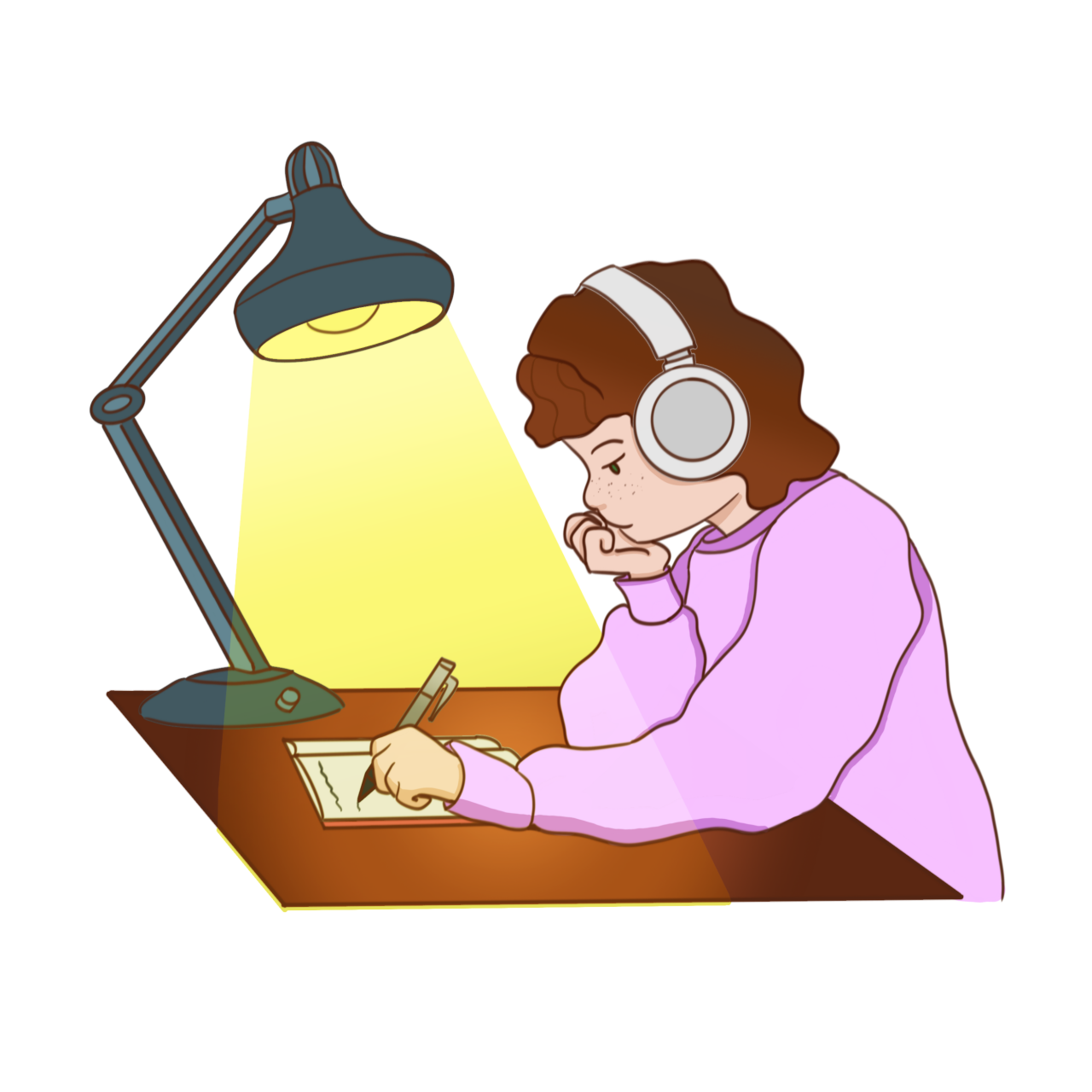illustration by Gracen Hoyle
Popular streaming platforms are deeply, deeply flawed. Independent musicians are barely able to make a comfortable wage with the way the paying models of streaming platforms are set up, especially given these tumultuous past few months. As seen in the RIAA (Recording Industry Association of America) 2019 Music Revenue Report, 79.5% of music revenue comes from paid streaming services; unfortunately, most of these platforms are disproportionately set up, so the biggest artists are the ones who reap the most benefits.
Spotify, the largest and most used streaming platform, Apple Music, its fierce competitor, and other leading streaming services operate on a “pro-rata” system. This is where all the money gained from paid subscriptions and advertisements are pooled together and divided among the top streamed artists. So, hypothetically, if Spotify were to earn $50 million in a month and The Weeknd’s songs totaled 4% of streams that month, The Weeknd alone would have earned $2 million.
Those in the music industry are looking into a “user-centric” system in which part of your streaming subscription is proportionately amongst the artists you listen to rather than going to the Top 40 artists. A Finnish comparative study done by Digital Media Finland concluded that “instead of the top 0.4% of tracks receiving 10% of the royalties, those tracks would collect closer to 5.6% of the royalties.” With this system, listeners would be able to support their desired musicians easier.
Although there are many other models proposed and practiced among smaller streaming platforms, it is imperative for large streaming platforms to evolve and for us as listeners to learn about these finicky and vicious practices and seek alternatives to streaming music.
As someone who has been a loyal Spotify subscriber for about five years, I rarely questioned the way streaming platforms were conducted. As someone who has over 400 carefully crafted playlists that sonically detail countless emotions and genres, I rarely challenged the idea of switching to another streaming platform. As someone who values convenient ways to discover new music, I rarely found myself wondering if artists under the meticulously designed platform I frequently used were being compensated fairly.
It’s okay though, we all have to reassess the way we view streaming platforms at some point. In fact, I didn’t begin wondering about these practices until about a week ago when I was forced to use the library computers to listen to music since my phone and laptop charger broke. I really hope you don’t have to endure a situation similar to mine to come to this realization; hopefully, this article suffices.
Unable to remember my Spotify password and too lazy to reset it, I had no other option than to use YouTube. This wasn’t really a hard setting to adjust to, especially since I have both a deep respect for YouTube’s algorithm for recommending content and a hoard of songs and mixes I frequently listen to on YouTube anyway, since Spotify doesn’t have them. Spotify only uploads music through record labels or third-party distributors, so YouTube has significantly more content to listen to since anyone can upload if they want.
On a lighter, less morally implicative note (for now), my musical itches were endlessly satisfied while on YouTube. From a soothing mix of Japanese Jazz to an hour mix of Andre 3000 verses played over Tyler, the Creator instrumentals to countless other alluring songs and mixes from various styles, I had no desire to go back to my Spotify days. I was able to interact with other people who also enjoyed the music, find more emotionally resonant music, and listen to content which would never be on Spotify due to a slew of copyright issues.
As someone who deeply values being able to transform a song in any way the creator chooses, YouTube was the best space I could have ever imagined. This was a meaningful listening experience since I was able to explore different versions of the same song through music videos, remixes, covers and live versions, which is something Spotify lacks.
Unfortunately, this brief period of excitement went away when I saw YouTube’s horrifying per stream payout: $0.0.00069 on Ditto Music. It is very conflicting to know so many of the platforms I use are inherently corrupt and fail to properly compensate the countless hardworking musicians I admire. Luckily, Bandcamp, which allows you to directly donate to artists, raised $4.3 million for artists when the COVID-19 pandemic first hit. So, I think it may be time to switch over.
Although Spotify and other platforms have monopolized the music streaming industry, we must reconsider how we listen to music to find a more sustainable and ethical means of listening to music and supporting artists.







